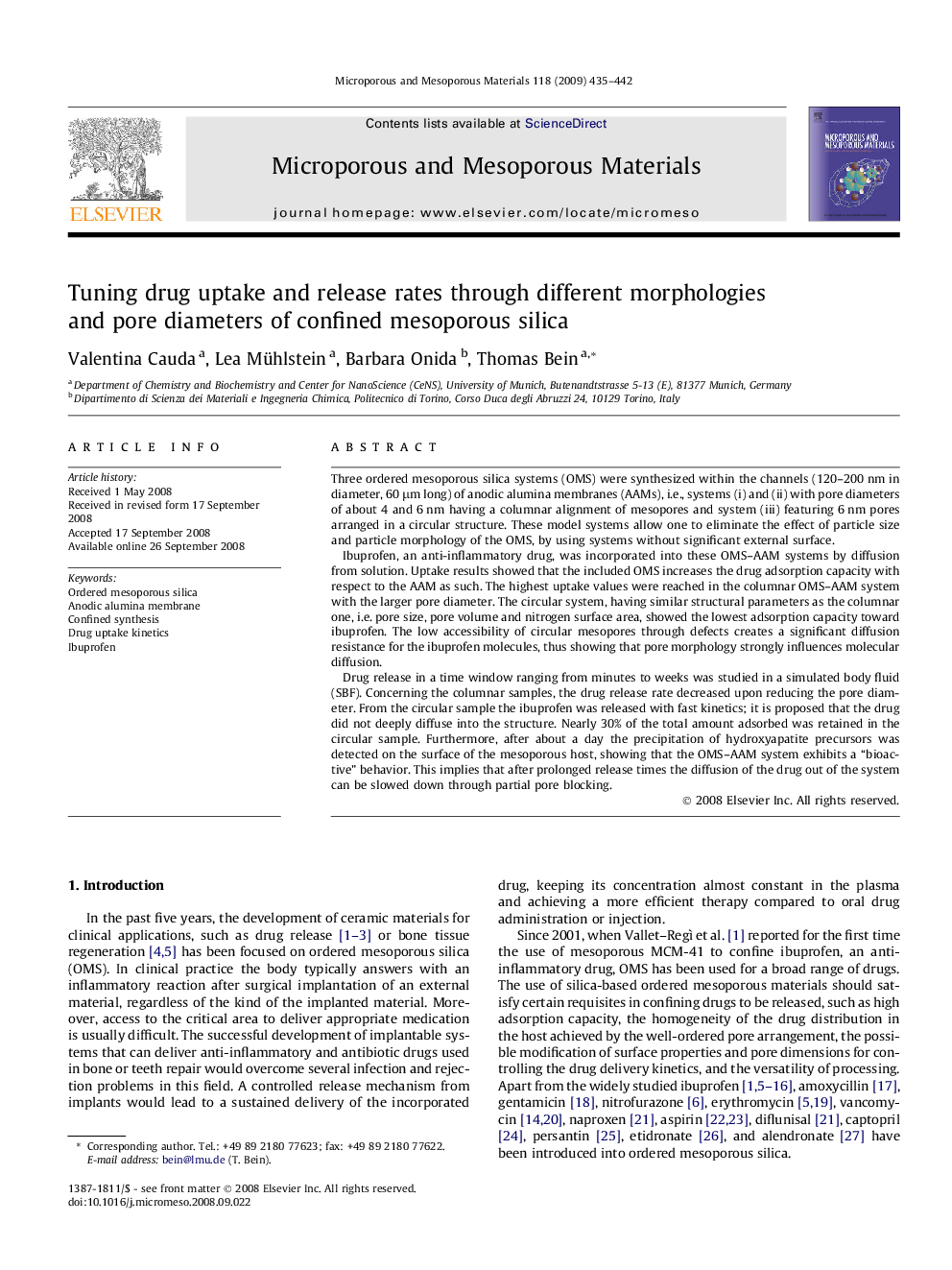| Article ID | Journal | Published Year | Pages | File Type |
|---|---|---|---|---|
| 75087 | Microporous and Mesoporous Materials | 2009 | 8 Pages |
Three ordered mesoporous silica systems (OMS) were synthesized within the channels (120–200 nm in diameter, 60 μm long) of anodic alumina membranes (AAMs), i.e., systems (i) and (ii) with pore diameters of about 4 and 6 nm having a columnar alignment of mesopores and system (iii) featuring 6 nm pores arranged in a circular structure. These model systems allow one to eliminate the effect of particle size and particle morphology of the OMS, by using systems without significant external surface.Ibuprofen, an anti-inflammatory drug, was incorporated into these OMS–AAM systems by diffusion from solution. Uptake results showed that the included OMS increases the drug adsorption capacity with respect to the AAM as such. The highest uptake values were reached in the columnar OMS–AAM system with the larger pore diameter. The circular system, having similar structural parameters as the columnar one, i.e. pore size, pore volume and nitrogen surface area, showed the lowest adsorption capacity toward ibuprofen. The low accessibility of circular mesopores through defects creates a significant diffusion resistance for the ibuprofen molecules, thus showing that pore morphology strongly influences molecular diffusion.Drug release in a time window ranging from minutes to weeks was studied in a simulated body fluid (SBF). Concerning the columnar samples, the drug release rate decreased upon reducing the pore diameter. From the circular sample the ibuprofen was released with fast kinetics; it is proposed that the drug did not deeply diffuse into the structure. Nearly 30% of the total amount adsorbed was retained in the circular sample. Furthermore, after about a day the precipitation of hydroxyapatite precursors was detected on the surface of the mesoporous host, showing that the OMS–AAM system exhibits a “bioactive” behavior. This implies that after prolonged release times the diffusion of the drug out of the system can be slowed down through partial pore blocking.
